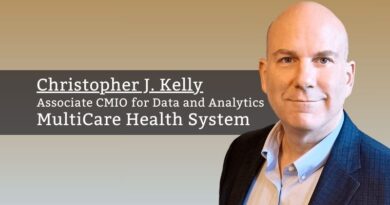Leveraging Technology to Improve Clinical Workflow
By Franco Grippo, Senior Director of Radiology, Lenox Hill Hospital
Radiology is an essential part of the healthcare delivery system. Its presence in the clinical setting is steadily increasing year over year as overall healthcare demand increases, new technology is developed, and radiology needs continue to expand. Nationally, radiology has seen consistent annual growth over the last 50 years. This national growth is reflected in local departments, including those I have personally overseen. Additionally, most experts agree that radiology is expected to increase in demand over the next thirty years. With expected radiology growth, maintaining an efficient clinical workflow is imperative to proper operations and patient satisfaction. In my role of overseeing a very large outpatient imaging facility, I was living these struggles. Our department, specifically our MRI modality, struggled with in-efficiencies and throughput issues that reduced volume and sub-par patient satisfaction scores. We sought out on a mission to improve clinical workflows, efficiency, and throughput. But how can anyone achieve efficient clinical workflow in a high volume, hectic and unpredictable environment like ours? For us, leveraging technology was the answer.
We embarked on a journey to find a technology we could use to improve throughput and clinical workflow without any negative impact on safety and quality. This was not an easy task, but something we felt was imperative to the success of our facility. The first task was evaluating what technologies were available in the marketplace and which could work for our needs. Although this part of the process is often undervalued, we understood the importance of the selection process to ensure we chose the technology that would best fit our requirements and set us up for the best possible chance of success. We took our time to evaluate different vendors, perform demos, and talk to our peers to ensure we made the best decision. We settled on a technology that most imaging vendors offer: image acquisition accelerating software for our MRI scanners. Our MRI department was our most utilized modality and had significant challenges with clinical workflows and efficiencies. Therefore, MRI was the perfect place to implement this technology to have the biggest impact on our patients. Implementing this in our MRI department would allow us to perform MRI scans faster with no impact on image quality, ensuring we continue to provide the highest quality images efficiently.
Better is possible. It does not take genius. It takes diligence. It takes moral clarity. It takes ingenuity. And above all, it takes a willingness to try. – Atul Gawande
Once we had identified the technology and appropriate vendor, it was time to purchase and implement. Proper implementation is critical to success. We created a multi-disciplinary approach to implementation inclusive of clinical (technologist, radiologist, and referring physicians), support staff, local IT staff and vendors. The implementation was methodical to ensure our end users, including technologists and radiologists, were not only trained in proper usage of the technology, but trained in full optimization of the technology. This ensured that staff were confident in the software and systemic in its use.
Once implemented, we looked at data analytics to monitor the success or evaluate opportunities to improve our process. We utilized key data metrics to see exactly what scans, by specific patient types and specific times where impacting clinical workflows. We then utilized the same metrics post-implementation to validate the value of the technology and its impact on our patients and workflow. The data was astounding. The data showed that by leveraging technology, we were able to increase our capacity by 28 percent, adding an additional 1,177 MRI studies annually. This increased capacity significantly improved our clinical workflow and efficiency. We were able to increase outpatient satisfaction scores by 40 percent largely due to the significant reduction in wait times created by the improved efficiencies. Lastly, the increased volume added an additional $1 Million annually to our bottom line. With that additional revenue, the return on investment (ROI) was less than a year, making this a true success for the department, healthcare system and, most importantly, the patients we serve.
Leveraging technology to improve key metrics that drive success in your departments makes sense. With the increased use of Artificial Intelligence (AI), we now have a new plethora of options to evaluate and utilize. AI will impact all sectors of life, particularly healthcare. Radiology has been using AI for over thirty years and therefore, can be considered the healthcare trailblazer when it comes to AI. As this technology continues to develop and be utilized, we can better evaluate the beneficial impact on our patients.
The journey to improve our clinical workflow, efficiencies and throughput in a large outpatient imaging center started with a thorough evaluation. Evaluating technologies that work best for our needs and positively impact our patients. Once identified, the systematic implementation was critical in ensuring confident and effective use of the technology. Using data analytics to either validate success or evaluate the opportunity to pivot and adjust after implementation allowed for the flexibility that is indispensable when introducing a new technology. Additionally, with the incremental development and adoption of AI, the technological options available to leverage have increased dramatically. Most importantly, it’s fundamental to ensure that whatever tool you utilize to improve processes within your departments truly impacts the patients and communities we serve. After all, our purpose is to improve the health of our communities and the patients we serve.



